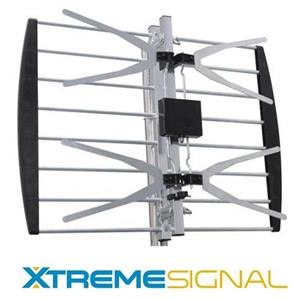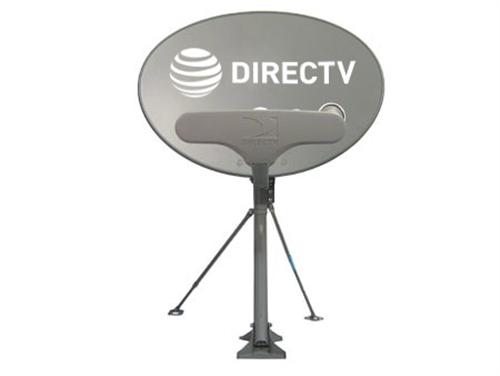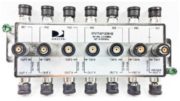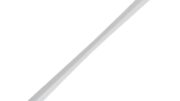Well kinda, but don’t expect it to work very well. The first thing you need to know is that a satellite dish is an antenna, but it’s designed to pick up signals in a completely different band from a TV antenna. You won’t get a lot of signal just by trying to connect the dish to the TV’s antenna in port. In fact it would surprise me if you got anything at all, unless you were very close to the towers. The receiving area is very small, and while the overall design of the dish would help, the larger waves of broadcast TV just wouldn’t be well received by the dish’s LNB.
Let’s take it further.
But let’s say that you bought just the reflector and arm assembly and then attached a small antenna like the HD-BLADE to it. In a case like that I would expect to get some signal, but not very much. The reflector of the dish focuses all the signal into a very small area, so most of the antenna would be unused. If you got any signal it would be just from the antenna pointing the right direction. Of course there would also be the short term problem of keeping the antenna in the right position. These flat antennas tend to be fairly floppy when they aren’t mounted to a wall. Mounting to a piece of plywood before you put it in front of the reflector would help. Of course it wouldn’t look very good.
What about those dish-style TV antennas?
I’ve seen dish-style antennas for TV reception and they work, but connecting a satellite dish to an antenna is just going to disappoint you. The idea is sound but it just doesn’t work. It’s possible that if someone spent enough money engineering the thing, it could possibly work, but the resulting antenna would probably just be too small and wouldn’t necessarily work better than a small outdoor antenna like the Xtreme Signal HDB2X.

In fact, the HDB2X is engineered very much like a dish, although it doesn’t look like it. The horizontal bars in back act as reflectors, just the way the large “dishy” reflector does on a satellite dish. The reflector assembly on an antenna is large and flat because the broadcast waves are so much bigger. This would require a gigantic “dishy” reflector to aim everything properly, if you were going to go that way.
The horizontal bars on the HDB2X accomplish the same function as the reflector on the dish (the “dishy” part) as they focus signal onto the antenna elements, which are the X-shaped parts on the front. This is a much more economical way of dealing with the same problem and works very well for antenna signals. Of course, something like that isn’t going to do well for satellite signals, which is why satellite dishes are shaped the way they are.
Use antennas the way they were meant to be used
There’s a lot of physics involved in explaining why different antennas are better for different signals. Most of it boils down to this. Imagine an antenna is like a net, catching different signals. Some signals are physically larger than others. (This is actually true) Therefore, you need a different size net to catch them while still letting other signals that you don’t want pass through, and using as little material as possible so as to save money. There’s a lot (a LOT!) more to it than that but that’s a good way to think about it.
It’s good to be thrifty, but…
Using a satellite dish as a TV antenna isn’t going to work very well no matter how you do it. It’s never going to return the level of signal you want no matter how much time you invest. You’re much better off simply shopping for an antenna at Solid Signal.





